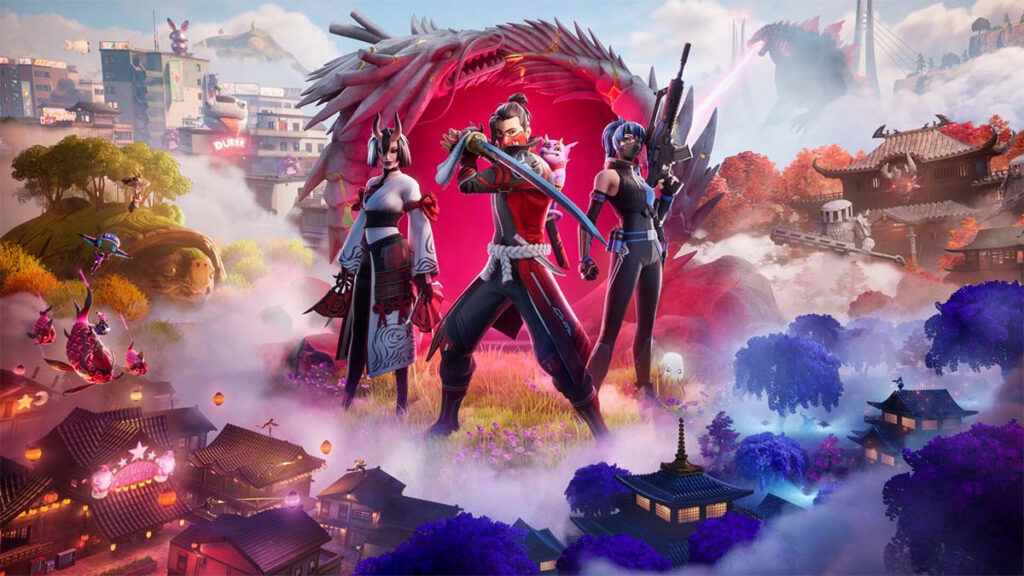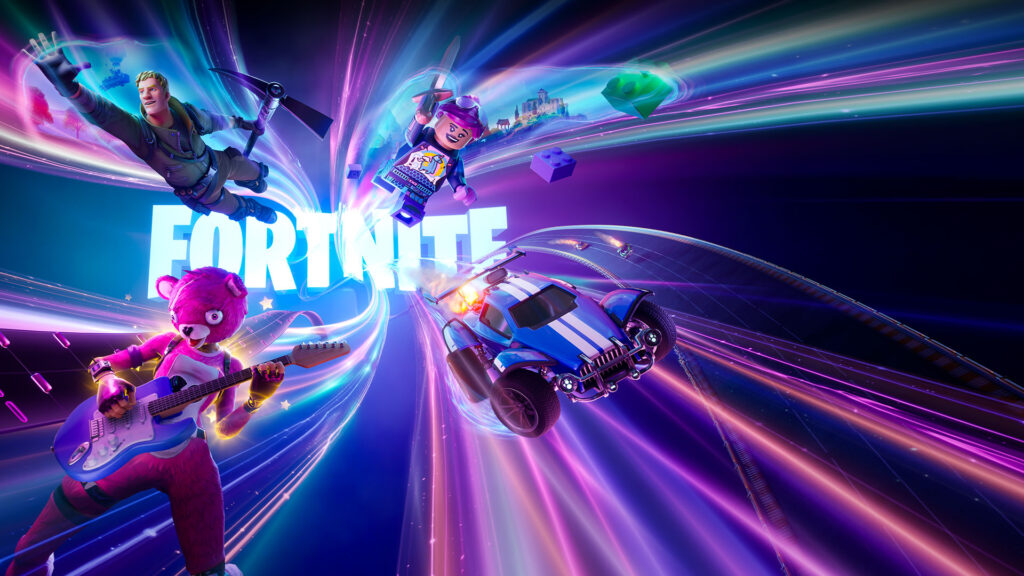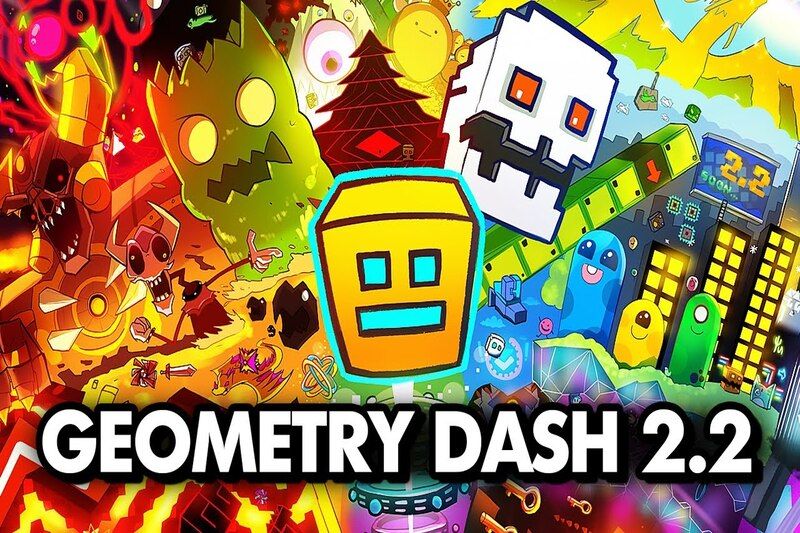Popular Now
Introduction
Fortnite, developed by Epic Games, is arguably one of the most influential games of the 21st century. What began as a simple tower-defense survival game exploded into a global phenomenon with the release of its free-to-play battle royale mode in 2017. However, as Fortnite matured into a live-service platform, it began facing an identity crisis. With constant content overhauls, aggressive monetization, and a shifting player base, Fortnite is at a crossroads. This article takes a deep dive into how Fortnite’s evolution has both propelled its success and threatened its sense of self.
1. From Save the World to Battle Royale: A Radical Pivot
When Fortnite was first introduced in 2017, it was primarily marketed as a co-op PvE experience called "Save the World." It featured base-building mechanics, PvE combat, and resource gathering. While moderately successful, it was quickly overshadowed by the meteoric rise of Fortnite: Battle Royale, released later that year.
The transition was swift and total. Battle Royale became the core identity of Fortnite. This abrupt pivot alienated early supporters of "Save the World" and signaled that Fortnite would henceforth chase trends to remain culturally dominant — even if it meant abandoning previous commitments.
2. The Golden Era: Building, Skill Gap, and Esports
Between 2018 and 2020, Fortnite reached its cultural apex. Streamers like Ninja, Tfue, and Bugha brought the game into the mainstream. The building mechanic distinguished Fortnite from other battle royales, allowing for creative outplays and unique strategy.
This era also birthed Fortnite’s competitive scene, culminating in the 2019 World Cup with a $30 million prize pool. But the steep learning curve of building mechanics led to a widening skill gap. Casual players struggled to keep up, leading to increased reliance on bots and skill-based matchmaking (SBMM), which, while fairer, reduced spontaneity and fun for many.

3. Constant Content Overhauls and Chapter Shifts
Fortnite’s chapter system (with new maps and mechanics every few seasons) keeps the game feeling fresh — but at a cost. Each chapter and season redefines the game, sometimes drastically. Players invest time mastering a meta, only to have it invalidated within weeks.
For example, Chapter 2 introduced swimming, fishing, and boats, while Chapter 3 brought sliding and new traversal mechanics. Chapter 4 introduced motorbikes, wall-climbing, and Unreal Engine 5 enhancements. While impressive, these shifts often overwhelm or confuse casual players and dilute Fortnite’s original feel.
4. Zero Build Mode: A New Direction or a Design Compromise?
In 2022, Epic introduced Zero Build Mode — removing Fortnite's most iconic mechanic: building. This was seen as an attempt to win back players alienated by the skill gap and constant competitive pressure.
While the mode attracted lapsed players and new audiences, it also split the player base. Some felt Zero Build stripped Fortnite of its unique identity, turning it into a generic shooter. Others embraced it as a more accessible, fun-focused alternative. The schism reflected a deeper tension: Should Fortnite cater to casuals, or stay true to its mechanical complexity?
5. IP Collaborations and Brand Overload
One of Fortnite’s strengths — and a source of criticism — is its vast array of crossovers. Characters from Marvel, Star Wars, Naruto, Dragon Ball, and even musicians like Travis Scott and Ariana Grande have all appeared in-game.
While these events are visually spectacular, they often dilute Fortnite’s in-game world cohesion. It’s hard to maintain a consistent narrative when Goku is fighting Darth Vader with a shotgun. Long-time fans argue that Fortnite feels less like a game and more like a brand billboard. The artistic and thematic consistency of earlier seasons has been replaced by a marketing machine.
6. Creative Mode and UEFN: Empowering or Fragmenting the Game?
Fortnite Creative Mode and the Unreal Editor for Fortnite (UEFN) opened new possibilities. Players could build custom maps, mini-games, and experiences. This turned Fortnite into a game development platform, not just a game.
While empowering, this move also fragmented the community. Instead of one shared experience (Battle Royale), players are now spread across thousands of custom games, making it harder for new players to understand what Fortnite “is.” It's Roblox-style creativity, but with the added pressure of competing for attention in a saturated ecosystem.
7. Aggressive Monetization and Battle Pass Fatigue
Fortnite's free-to-play model relies heavily on cosmetics, emotes, and the battle pass. While praised for not being pay-to-win, Fortnite’s monetization has grown more aggressive over time.
Limited-time skins, multiple currencies (V-Bucks, Star Tokens), and daily FOMO-inducing item shops push players to spend frequently. Many players express fatigue from the constant pressure to buy or grind, especially when old skins are re-released with minimal changes. What once felt optional now feels essential to keep up socially and aesthetically.
8. Storytelling vs Gameplay: The Narrative Disconnection
Epic has tried to weave a multi-season, multi-chapter narrative into Fortnite through live events and lore-rich updates. But the result is mixed. Players often find the story hard to follow or disconnected from gameplay.
Events like the Cube saga, the Seven, and the Zero Point have intriguing ideas, but they often serve more as marketing than cohesive worldbuilding. Unlike narrative-driven games, Fortnite lacks in-game storytelling depth, making its lore feel fragmented and, at times, irrelevant.

9. Player Retention and Content Creator Burnout
Fortnite thrives on content creators — but many streamers and YouTubers have voiced burnout. Constant changes, declining viewership, and monetization fatigue have driven many to other games.
The same applies to players. While Fortnite still attracts millions, the churn rate is high. New players arrive via collaborations, but many don’t stay. Veteran players cycle in and out, often waiting for seasons that match their preferences. Epic’s attempts to please everyone have created a cycle of short-term excitement but long-term instability.
10. Fortnite in 2025: Platform, Game, or Metaverse?
Today, Fortnite is more than a game — it’s a platform for concerts, movies, games within games, and brand integrations. Epic envisions Fortnite as a part of the future metaverse, but that goal comes with identity tension.
Is Fortnite a competitive shooter? A sandbox? A social hub? A brand engine? It tries to be all these things at once, which appeals to a broad audience but risks pleasing no one deeply. Epic’s challenge moving forward is to define what Fortnite stands for — not just what it can contain.
Conclusion
Fortnite’s identity crisis is rooted in its own ambition. Its flexibility and willingness to adapt have fueled its massive success, but they’ve also created confusion about what the game truly is. From shifting gameplay modes to relentless collaborations and monetization tactics, Fortnite walks a tightrope between innovation and over-saturation.
To remain relevant and respected, Fortnite must balance its evolving content with a clearer, player-driven identity. It needs to reclaim some of the consistency that made it iconic, while still delivering the unexpected twists fans crave. If Epic can manage that, Fortnite’s next chapter might be its strongest yet.


















